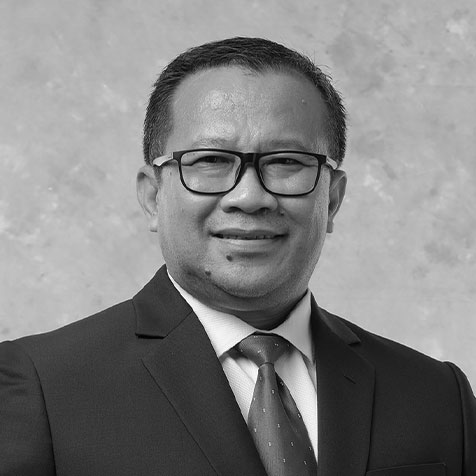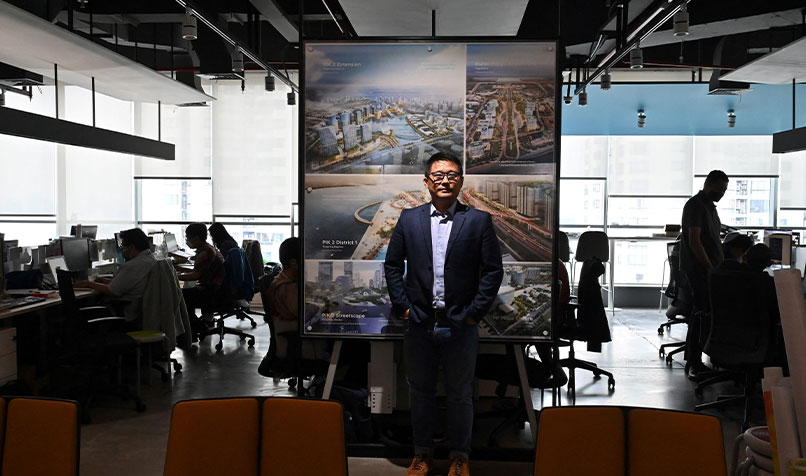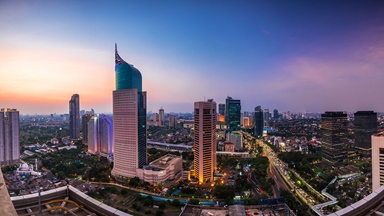Loading component...
At a glance
Indonesia is at the “pinnacle of global leadership”, says Indonesian President Joko “Jokowi” Widodo.
Widodo’s words capture the confidence of modern Indonesia. Classified as an “upper-middle-income” country by the World Bank, Indonesia is on the rise.
The nation has benefitted from high global commodity prices in the wake of the Russia–Ukraine war. The high prices have boosted the rupiah and swelled Indonesia’s current account, enabling it to outperform most economies over the past 18 months.
Indonesia’s 5.3 per cent GDP growth in 2022 places it among the world’s best performers, but a modest reduction to that mark is forecast for 2023.
Indonesia has also reported export growth of 11.7 per cent and consumption growth of 4.5 per cent in the first quarter of 2023. Manufacturing, transport, and the food and beverage sectors registered growth of 4.4 per cent, 15.9 per cent and 11.6 per cent, respectively, for the same period. Inflation in Indonesia is also relatively low compared with most other countries.

“Amid the global economic slowdown, the Indonesian economic recovery is getting stronger,” says Dr Adi Budiarso FCPA, director of the Financial Sector Policy Center at Indonesia’s Ministry of Finance. Budiarso also chairs CPA Australia’s Indonesia Advisory Committee.
“Going forward, the outlook for Indonesian economic growth will remain strong, supported by structural reform and economic transformation.
“The financial sector also remains solid amid the uncertainty of the global financial sector,” Budiarso says.
Spending strength
Denny Irawan, PwC Indonesia’s head of research and economics, says a growing middle class is fuelling consumption and helping to power the economy.
Household consumption accounts for more than half of Indonesia’s GDP. It accelerated in 2022 and has contributed to Indonesia’s post-pandemic strength. Part of this consumption factor has been a significant jump in travel-related spending after the removal of COVID-19 restrictions for citizens.
With such strong consumption, high government expenditure and manageable inflation, Irawan is confident Indonesia can continue to navigate a complex global economic environment and maintain robust growth. One weapon in the government’s armoury is providing subsidies for “volatile goods”, such as fuel, gas and electricity.
“That’s one of the most important features of Indonesia’s economy and one of the most formidable tools for the government to control and stabilise prices,” says Irawan.
However, a recent IMF report on the Indonesian economy noted that, as global oil prices surged in 2022, government spending on such subsidies more than tripled against budget.
One of the main recommendations from the IMF to the government was for energy subsidy reform. It noted that such reforms are essential to change incentives in the energy sector, help achieve climate objectives, improve the government’s fiscal position and support Indonesia’s development agenda.
However, commodity prices are falling, and demand is slumping from economies like Mainland China and the US – both of which are battling domestic headwinds, Irawan adds.
As a result, Irawan believes Indonesia will encounter tougher export markets in the year ahead.
New horizons

Best known for exporting coal, mineral fuels, rubber, iron and steel, the new, emboldened Indonesia has been flexing its muscles beyond its traditional strengths.
Resources will continue to dominate Indonesia’s export market for some years to come, says Irawan, but the government is committed to diversifying.
“For example, during the last 10 years, vehicle exports have made the list of the top five exports,” he says.
The government has also been pursuing electric vehicle (EV) manufacturing. This has prompted leading carmakers from the US, Asia and Europe to invest in Indonesia, receiving tax holidays and other incentives.
Leigh Howard, CEO of Asialink, Australia’s National Centre for Asia Capability, says the EV campaign is at the heart of Jakarta’s desire to pursue greater industrialisation. The move includes a call for Indonesia and Australia to join forces to take advantage of their abundant reserves of nickel and lithium to target battery production for EVs.
The EV industry presents significant opportunities not just to produce vehicles, but also for the expansion of the value chain around the car industry, Howard says.
Howard believes Australia has an opportunity to partner with Indonesia on the EV and battery initiatives, as well as to promote its export strengths in other areas such as education, health care and food.
"Amid the global economic slowdown, the Indonesian economic recovery is getting stronger."
“There’s a price point at which Australian exports become more attractive for an increasingly affluent consumer market,” Howard says.
The EV campaign comes as Indonesia seeks to redefine itself on multiple fronts. The transportation, health and tourism sectors are existing strongholds. Budiarso expects the growth of the digital and green economies to signal to the world that Indonesia is also open to transformative business programs.
On the digital front, Budiarso says the gross merchandise value of Indonesia’s e-commerce markets has hit US$77 billion (A$118 billion). This accounts for about 40 per cent of the total market in South‑East Asia.
This figure is projected to reach US$130 billion (A$199 billion) by 2025.
“Indonesia has already succeeded in becoming a major player in the Asian digital economy,” Budiarso says.
The Widodo government has already taken important steps to support the digital revolution, such as reducing the regulatory burden and offering investment incentives. The e-commerce boom has enabled consumers across a broad geographical footprint to participate in the digital economy.
“People have been able to get products that they never could have in the past,” Howard adds. “You can now buy almost anything via Indonesian e-commerce.”
This includes commoditised products such as motorbikes and will soon include motor vehicles. “As a result, it’s less important now to go to a showroom to ‘kick the tyres’, so to speak,” Howard says.
CPA Australia’s Asia-Pacific Small Business Survey
Small business is a big player
Another likely engine room of growth in Indonesia is the small business sector.
CPA Australia’s Asia-Pacific Small Business Survey reveals that 84 per cent of Indonesia’s small businesses expect to grow in 2023. The more than 64 million micro, small and medium enterprises (MSMEs) in Indonesia have been contributing significantly to job growth and economic opportunities.
Budiarso says the lifting of travel restrictions has helped Indonesian MSMEs perform strongly, in line with associated boosts to tourism and private consumption.
Budiarso acknowledges that most of Indonesia’s MSMEs are growing, but concedes that many find it difficult to access external finance. To address this issue, the government is seeking to encourage business credit and financing options for MSMEs, as well as enabling access to the government’s procurement marketplace.
On the money
As Indonesia looks to further promote growth, PwC Indonesia investment director Julian Smith believes the financial services sector can be one of the shining lights.
“There’s a lot of potential to grow Indonesia’s financial service sector by minimising regulation,” Smith says.
Smith says an approach in line with a more favourable tax regime could stimulate asset management and foreign exchange trading markets. However, he warns that Indonesia should not be complacent, given that previous predictions of “an exciting period ahead” for the economy have not always gone to plan.
To raise GDP growth from the 5 per cent range to 7 per cent, tackling red tape and regulatory reform is crucial, Smith says.
Ongoing improvements to the rule of law and transparency of the judicial system are also necessary. “Some of those reforms would just make it easier to do business,” he says.
"People have been able to get products that they never could have in the past. You can now buy almost anything via Indonesian e-commerce."
“We’ve seen attempts to reduce regulatory barriers, but there’s a lot more to do.”
The role of Indonesia’s state-owned enterprises (SOEs) is also a talking point.
The Widodo government has made moves in recent years to give SOEs a chance to make fundamental changes to improve their competitiveness. The government has endorsed “clustering” of SOEs to increase their competitive advantage and profitability while helping them forge stronger partnerships abroad.
Although SOEs are important to the economy, Budiarso says they also “have a responsibility to the state of Indonesia to ensure its profitability and sustainability”.
“Indonesia is committed to continuing structural reforms and economic transformation,” he says. “We do believe these strategies will further strengthen the nation’s economic fundamentals and resilience in coming years.”
Green shoots
As part of its green strategy, Indonesia launched the ambitious Just Energy Transition Partnerships (JETPs) in 2020 with international partners, including the US, the European Union, Japan and Canada.
The deal will channel billions of dollars into initiatives to help Indonesia make the switch from fossil fuels. Indonesia’s green economy plans include rolling out potentially the world’s largest green industrial park, to be located in North Kalimantan province.
“With the increasing threat of climate change, development of the green economy is becoming more important than ever,” says Dr Adi Budiarso FCPA, chair of CPA Australia’s Indonesia Advisory Committee.
Budiarso notes that Indonesia’s decarbonisation strategy will include retiring the nation’s coal-fired power plants and replacing them with renewable energy options. “This energy transition is really important for Indonesia.”
Indonesia will also establish its own carbon exchange by the end of 2023. The exchange will play a pivotal role in enabling both domestic and cross-border trading. The exchange will operate on a cap-and-trade model, allowing businesses to trade emission allowances within set pollution limits.
The regulations have been enacted by the Financial Services Authority (OJK) and will be effective from September 2023 onwards. The Indonesia Stock Exchange is set to operate the carbon exchange that will be supervised by the Financial Services Authority and the Environment and Forestry Ministry, the nation’s financial regulator.
The rise of Nusantara

As Jakarta sinks – literally – a new capital city for Indonesia is set to emerge.
With about 40 per cent of Jakarta below sea level, the Widodo government has commenced construction of a new capital. The city will be known as Nusantara (“archipelago” in ancient Javanese) and will be located in Borneo’s East Kalimantan province.
Construction started at the end of 2022. The hope is that core infrastructure for an initial 500,000 residents will be completed by late 2024. Nusantara is expected to be fully liveable by 2045.
President Widodo will complete his second and final five-year term in October 2024. Julian Smith of PwC Indonesia expects commitment to Nusantara will outlast the Widodo era.
“I’m pretty sure that whoever replaces Jokowi will not reverse this plan,” Smith says.
According to a PwC Indonesia article on foreign direct investment intelligence, Nusantara will rely heavily on international investors to fund the US$29.2 billion (A$44.7 billion) project. State funding is likely to cover about 20 per cent of the development costs. It would not make sense to “suck” investment away from other sectors of the economy, says Smith.

